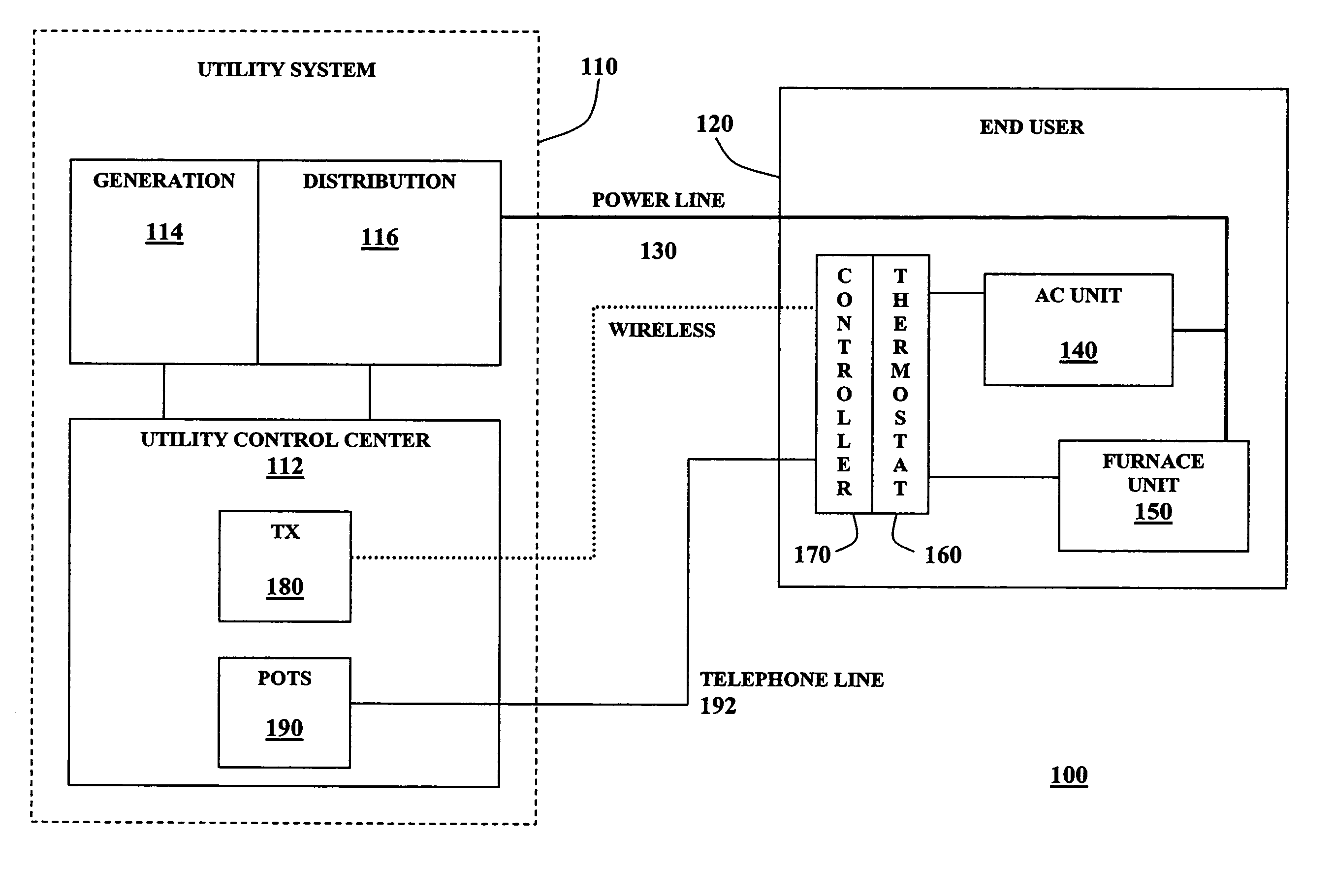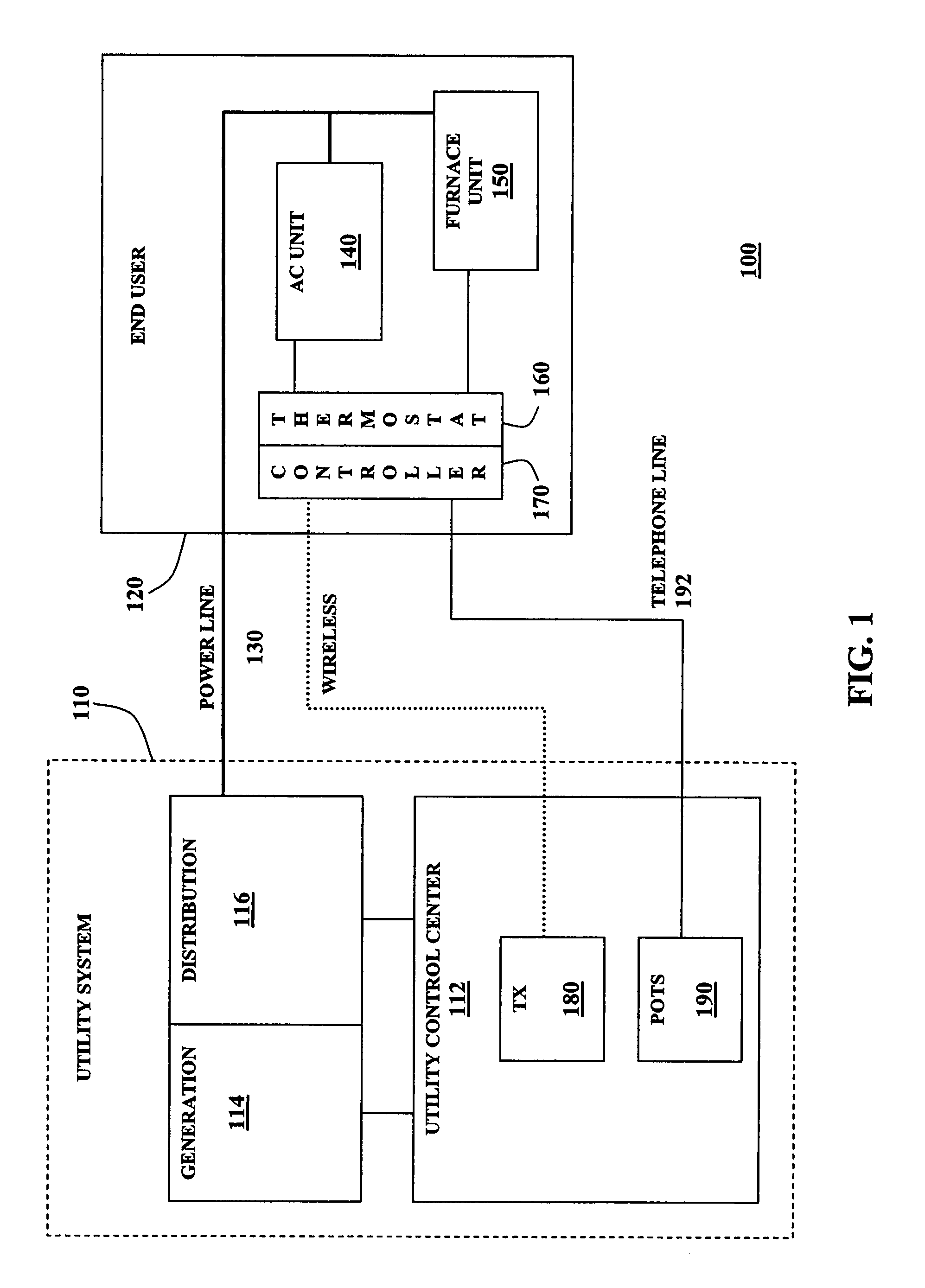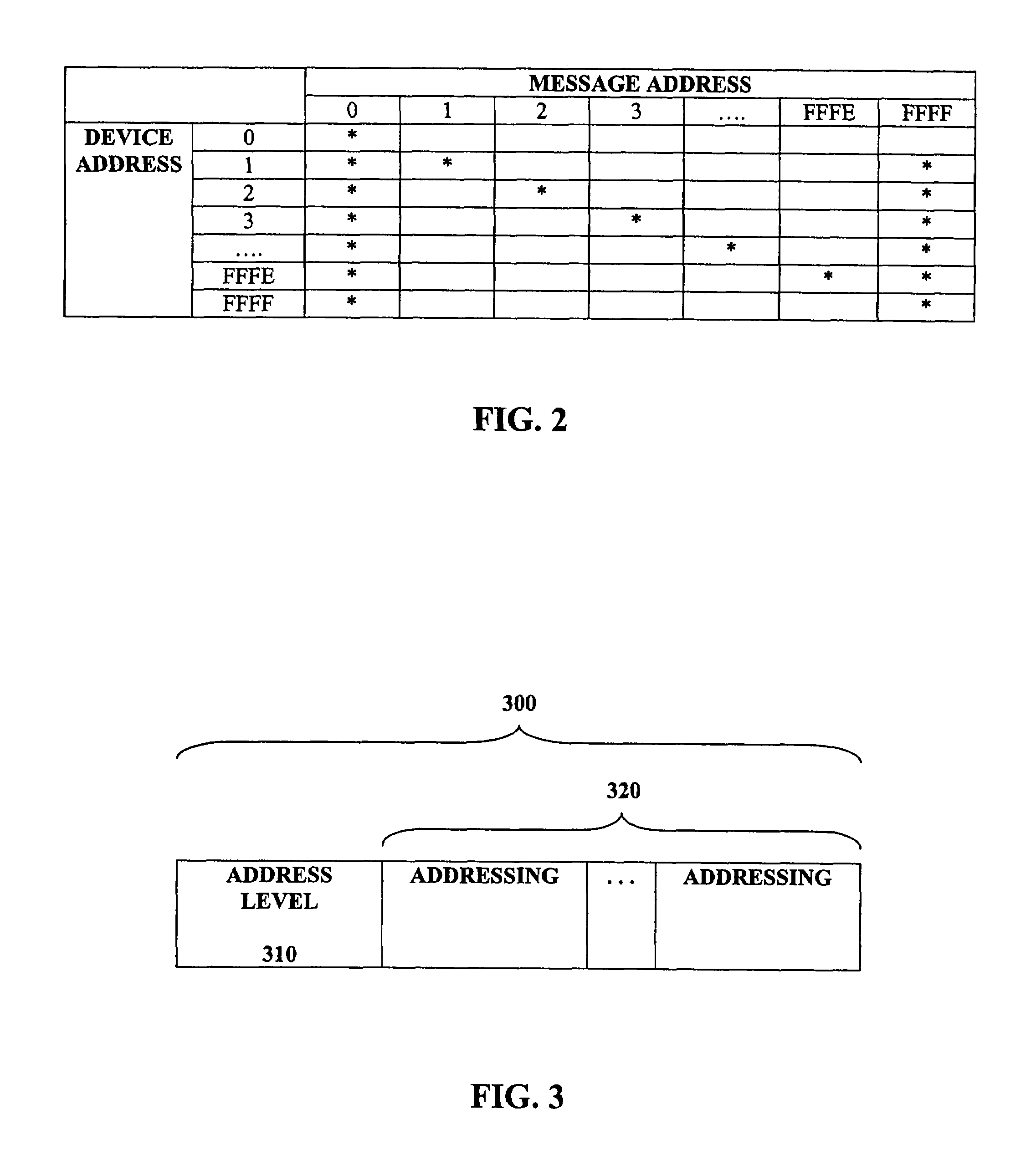Utility load control management communications protocol
a load control and communication protocol technology, applied in the field of utility load control, can solve the problems of involuntary blackouts, brownouts or load-sheddings, high cost, etc., and achieve the effects of reducing power consumption, facilitating communication, and reducing peak demand
- Summary
- Abstract
- Description
- Claims
- Application Information
AI Technical Summary
Benefits of technology
Problems solved by technology
Method used
Image
Examples
Embodiment Construction
[0042]Various embodiments of the protocol, system, and method of the invention provide control and management of a utility power-consuming load via a communications protocol administered by a master utility station. The invention can be more readily understood by reference to FIGS. 1-20, the Appendix, and the following description. The Appendix includes exemplary protocol message formats in accordance with various embodiments of the invention and is incorporated herein by reference in its entirety. While the invention is not necessarily limited to such an application, the invention will be better appreciated using a discussion of exemplary embodiments in specific contexts.
[0043]The various embodiments of the invention disclosed and described herein include a communications protocol that can, under control by a master station, communicate with a device remote controller by power line communications (PLC) methods, internet communication methods, or radio frequency (RF) communication m...
PUM
 Login to View More
Login to View More Abstract
Description
Claims
Application Information
 Login to View More
Login to View More - R&D
- Intellectual Property
- Life Sciences
- Materials
- Tech Scout
- Unparalleled Data Quality
- Higher Quality Content
- 60% Fewer Hallucinations
Browse by: Latest US Patents, China's latest patents, Technical Efficacy Thesaurus, Application Domain, Technology Topic, Popular Technical Reports.
© 2025 PatSnap. All rights reserved.Legal|Privacy policy|Modern Slavery Act Transparency Statement|Sitemap|About US| Contact US: help@patsnap.com



